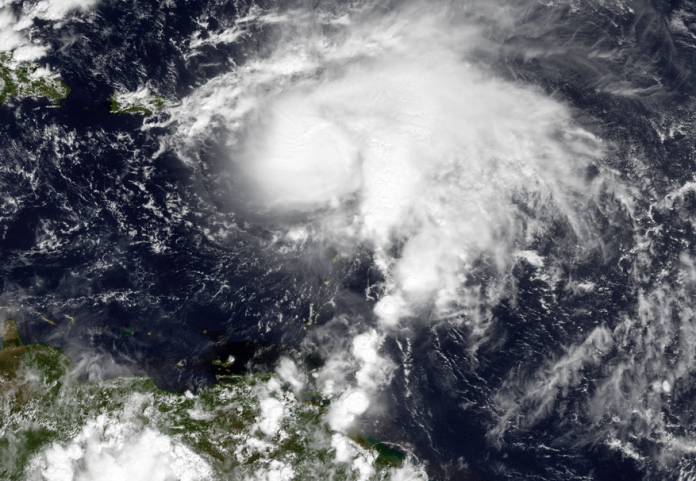The College of William and Mary cancelled classes and closed administrative offices Friday, Sept. 6 due to expected severe weather conditions generated by Hurricane Dorian. Dorian, now a post-tropical storm system impacting portions of Eastern Canada, threatened Williamsburg last week as it travelled north parallel to the East Coast after striking the Bahamas.
In anticipation of Dorian, the College announced Thursday, Sept. 5 that all university-sanctioned events and classes would be cancelled after 7 p.m. that evening and that the College would remain closed until 8 a.m. Saturday. In a TribeAlert message sent to staff, faculty and students Thursday afternoon, several expected weather conditions — including heavy rainfall, high wind gusts and sustained wind speeds of over 30mph — were referenced as contributing factors in the decision to temporarily close the College.
When the College publicized its decision to close campus Sept. 5, contingency plans addressing Dorian’s potential impact on southeastern Virginia had begun almost a week prior when the College’s emergency management coordinator first initiated contact with the administration’s broader emergency management team. Senior Associate Vice President for Communications Brian Whitson, among the members of the College’s EMT, said that Dorian became a topic of conversation days before the campus-wide message was distributed.
“The EMT started discussing the need for a campus message about a week ahead of the storm’s arrival,” Whitson said in an email.
“The EMT started discussing the need for a campus message about a week ahead of the storm’s arrival,” Whitson said in an email.
As Dorian’s path drew closer to Williamsburg, the EMT met to discuss various options in responding to the storm, including closures and student evacuations. In addition to holding two in-person meetings to discuss Dorian Tuesday, Sept. 3 and Thursday Sept. 5, the EMT listened into severe weather updates provided by the National Weather Service in informing the College’s decision-making process.
Vice President for Student Affairs Ginger Ambler ’88 Ph.D. ’06 noted that the EMT constitutes a diverse array of representatives from within the College community and indicated that the choice to include representatives from different swaths of campus maximizes the likelihood of making a well-informed decision on severe weather incidents like Dorian.
“The members of the EMT represent many areas of campus and the expertise needed to respond effectively in a weather emergency — eg. W&M police, facilities management, residence life, dining services and transportation, university communications, athletics, student affairs, Reves Center, academic affairs,” Ambler said in an email.
While the EMT is instrumental in guiding the College’s policy responses to severe weather incidents, the decision to cancel classes ultimately rests with the Provost. The EMT is then tasked with implementing her decision and publicizing it to members of the College community, as well as with providing updates regarding the storm’s progress.
One of these updates came Friday afternoon, when students, faculty and staff received an update from EMT Chair Sam Jones regarding the storm’s passage.
“Hurricane Dorian has moved offshore, and the William & Mary campus experienced relatively little impact from the storm,” Jones said in an email.
“Hurricane Dorian has moved offshore, and the William & Mary campus experienced relatively little impact from the storm,” Jones said in an email.
While Dorian’s influence in Williamsburg was limited mostly to intermittent thunderstorms, the decision to close the College came almost a year after Hurricane Florence’s landfall, which prompted a campus-wide evacuation last September.
In advance of Florence, classes were cancelled for three and a half days, and residence halls were closed for almost four days, requiring students to evacuate the area. According to Ambler, the differences in severe weather forecasts associated with both Dorian and Florence explained the rationale behind closing the College this year, rather than evacuating students as was done last fall.
Ambler noted that the College’s primary concern with severe weather events in Williamsburg is the possibility for widespread electrical power outages, which undermine the campus’s ability to function properly and limt the administration’s ability to provide a safe haven for students. When dealing with complex and unpredictable storm systems, Ambler said that the likelihood of power outages is a major consideration in determining the College’s course of action.
“Because many of our campus safety systems rely on electrical power (including door access and fire suppression systems), decisions to evacuate are frequently made with that variable in mind,” Ambler said. “That was the case with Florence last year. With Dorian, the predicted impacts were not nearly as extreme — as of last Thursday, winds in Williamsburg were no longer expected to exceed 45 mph and anticipated rainfall was down to 2 inches.”
EMT members stressed that the decision to close or evacuate the College is a case-by-case one and that there are no specific thresholds that must be met in order to pursue any given decision. Whenever severe weather threatens the area, the EMT reconvenes to address it as an individual incident and avoids categorizing it alongside past storms. According to Ambler, this holistic approach ensures that the College community is kept safe in the face of potentially dangerous weather-related activity.
“Each storm really is unique, and we look at all the variables known to us at the time when weighing our options,” Ambler said statement.

